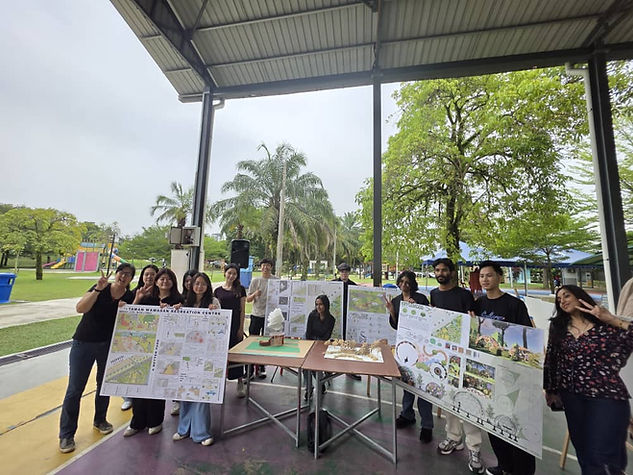
PROJECT 1A
SITE ANALYSIS & DESIGN RESPONSE – DESIGN FOR COMMUNITY
In this assignment, each tutorial group is required to develop a Design Manifesto based on site analysis of Taman Wawasan, Puchong, which will inform their design direction for P1B (two small community structures) and P1C (a Social Hub). The manifesto must address the overall design approach, proposed community programs, suitable locations, user identification, community participation, connectivity, inclusive access, and sustainability strategies. The group must produce four A0 boards (two for site analysis and two for design response), incorporating drawings, diagrams, community quotes, and visuals. These boards must be printed and presented during an exhibition at the Taman Wawasan amphitheatre.
PRESENTATION BOARD
Reflection
During this project, I enhanced my critical thinking and problem-solving abilities by addressing the weaknesses present in my models. I strengthened the ordering principle within my models through a process of trial and error, consistently refining and reworking them.
PROJECT 1B
SMALL COMMUNITY STRUCTURE
In this assignment, students, working in teams of 5–6 within their tutorial group, must design a small community structure (approx. 3m x 3m x 6m or 50 sqm) for Taman Wawasan Recreational Park based on insights from Project 1A. The structure should explore materiality, tectonics, and environmental poetics, while addressing the needs, culture, and social dynamics of the local community. Students will brainstorm with sketches and conceptual diagrams, research joinery and construction systems, build a physical elemental model, and finalize their design with detailed axonometric drawings, scaled orthographic drawings (1:25), and perspectives that highlight function, human interaction, materials, and assembly. Each team must submit one A0 presentation board and one physical model, along with a PDF submission via Google Drive on the presentation day.
PRESENTATION BOARD
Reflection
During this project, I enhanced my critical thinking and problem-solving abilities by addressing the weaknesses present in my models. I strengthened the ordering principle within my models through a process of trial and error, consistently refining and reworking them.